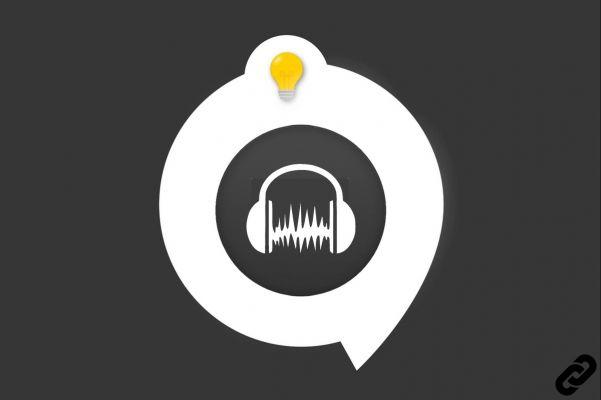Launched in 1999 by Dominic Mazzoni and Roger Dannenberg of Carnegie Mellon University, Audacity quickly conquered the world of audio editors. It must be said that the software is a free and open-source audio editor and recorder that is feature-rich and easy to use. Available on Windows, Mac, Linux and other operating systems, it runs on almost any PC. In particular, it offers excellent sound recording and editing quality.

Very versatile, Audacity allows you to record from any external source. You can record directly from the microphone input of your computer or from an external audio interface. You can tweak the sounds with great editing tools and plugins. We offer you some tutorials to discover the software, learn how to better record and edit. Follow the leader !
How to get started with Audacity?
Finding your way around audio editors is not always easy. Too many features, poor ergonomics or a lack of clarity in the display can put off more than one user.
Don't be fooled by its slightly “old school” visual interface, the main features of Audacity are well highlighted. To get started with the software, it is still better to get to know its different sections, and to know some of the basic functionalities.
Find our series of tutorials to get started with Audacity:
How to get started with Audacity?
How to download Audacity?
How to create an Audacity project?
How to manage Audacity toolbars?
How to quickly edit on Audacity?
How to select your devices on Audacity?
How to manage tracks, channels and clips on Audacity?
How to select tracks on Audacity?
How to record on Audacity?
Of course, recording is an essential function of Audacity. The software is very versatile in this regard. It allows you to record sounds from your computer, external microphones, instruments, etc.
Increase the volume without causing clipping, automatically remove long silences, divide a sound into separate tracks... Learn how to make the right settings to record properly.
Find our series of tutorials for recording with Audacity:
How to record on Audacity?
How to record with computer microphone on Audacity?
How to test a recording on Audacity?
How to record computer with Audacity?
How to split a recording into separate tracks on Audacity?
How to program a recording or activate it by sound on Audacity?
How to increase the volume of a recording on Audacity?
How to save and export on Audacity?
How to edit on Audacity?
Do you want to work on your sound to get the result closest to what you want? You have to go through some editing work. That's good, Audacity has a lot of native features. For example, to achieve fade effects, correct latency or even to mix several sounds.
Audacity also supports effect plugins like LADSPA, LV2, Nyquist, VST and Audio Unit. So many possibilities to create new effects for example. You can import and export in Ogg Vorbis, FLAC, AAC and AC3 formats via the FFmpeg library. It allows you to export audio files in other uncompressed formats, such as WMA, AIFF or Au.
Note that for a recording made from the built-in microphone of a computer, it is better to export in MP3 in order to reduce the size of the finalized file. The WAV format is more recommended for high quality uncompressed audio.
Find our series of tutorials for editing with Audacity:
How to edit on Audacity?
How to shorten silences on Audacity?
How to remove background noise in Audacity?
How do I fade in Audacity?
How to manage latency on Audacity?
How to create a loop on Audacity?
How to create reverb on Audacity?
How to configure the tracks on Audacity?
How to create an audio CD on Audacity?
How to install VST plugins with Audacity?
How to install FFmepg on Audacity?
How to install the Lame MP3 codec on Audacity?




















![[Review] Samsung Powerbot VR7000: the robot vacuum cleaner from Star Wars](/images/posts/6bc44de38605b5c0fa12661febb1f8af-0.jpg)





